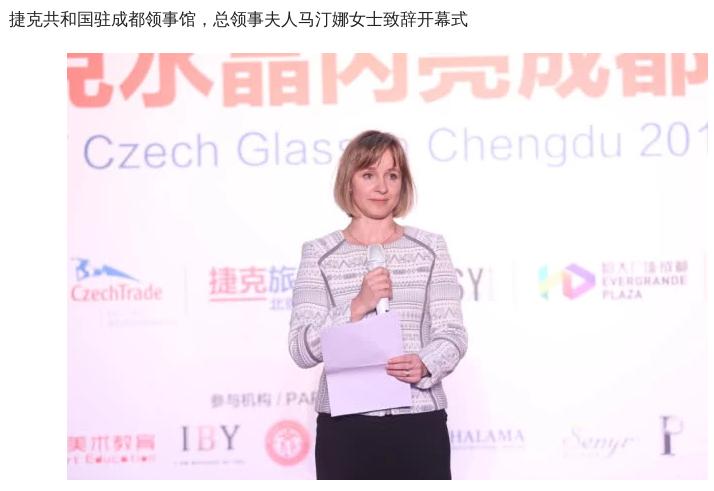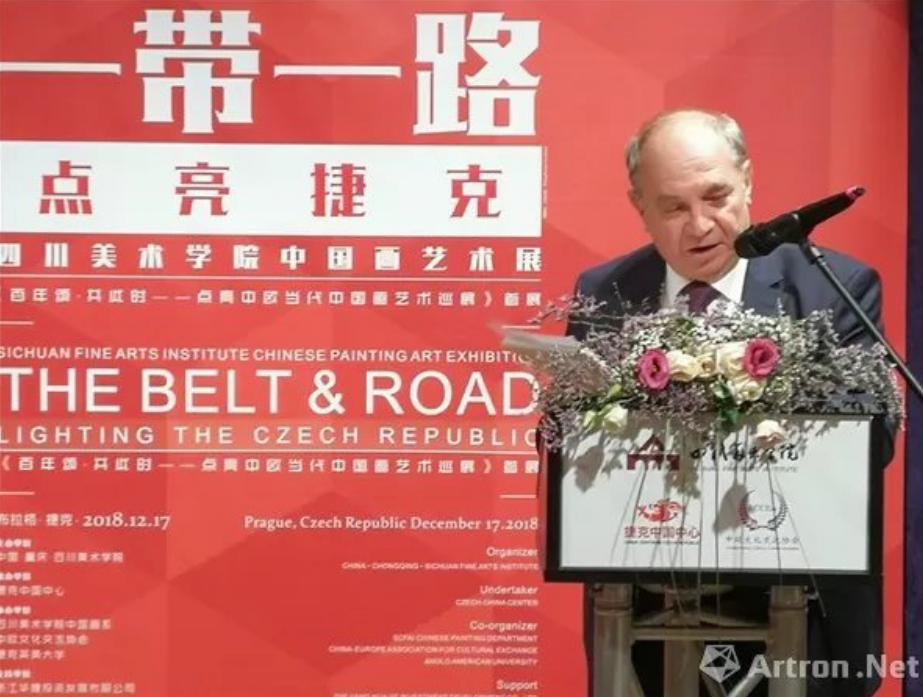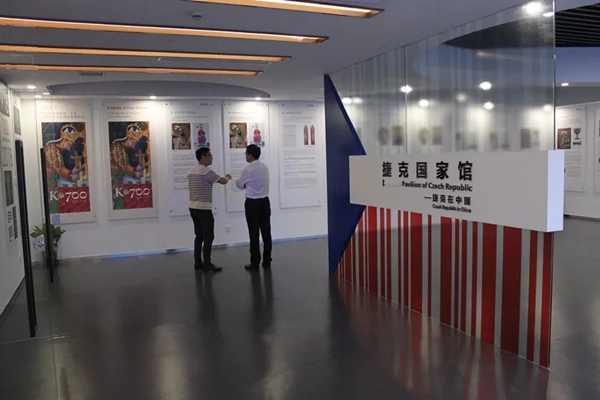Days before the 30th anniversary of the Tian’anmen massacre, the Czech National Museum was offered a donation of two teapots presumably worth over $200k, as part of an exhibition on Chinese tea culture. The offer attracted media attention, as the circumstances were consistent with a propaganda operation meant to distract China-themed media coverage away from the anniversary. Not only had the most sensitive date been chosen; the donation appeared to have been organised in some haste, with seemingly machine-translated promotional materials and imprecise information about who exactly wished to donate the objets d’art. The museum eventually refused the gift, and media attention moved elsewhere; the identity of the entities behind the event remained unknown. This post presents an analysis of available data on the donation attempt, disclosing a web of political and business contacts that are indeed consistent with the hypothesised political nature of the incident.
Although the entities directly involved in the donation are likely of only minor significance, their institutional links constitute new evidence of the existence of CCP-aligned influence networks within the state, political and business structures of a Western democratic nation. Groups with links to the CCP’s United Front system, the Czech Communist Party (a favourite interlocutor of its Chinese counterpart), and CEFC, a PLA-linked conglomerate instrumental in political influence in the Czech Republic and beyond, have seen their activities supported by Czech state organs, notably some of its diplomatic representations in China. Such low-key activities as the ones discussed here can complement the effects of high-level élite capture, creating sustainable CCP-friendly environments while eluding the media and public scrutiny associated with high politics.
Stable and stabler: Machine translation meets high culture
The exact entity behind the exhibition and attempted donation remains hard to identify. The National Museum was contacted by an intermediary, the local PR company Promo Production, whose (now seemingly inactive) website used to list among its clients Sichuan Airlines and Sichuan province itself.
Promo Production’s promotion of the tea pot, despite a stated interest in exchanges between Czech and Chinese culture, was not too meticulous a presentation of either. Promotional materials they distributed ahead of the donation seemed to have been machine-translated into Czech, opening with a reference to “the sweat of work” (pot práce) and asserting that
exchanges between China and Czech culture are stable and stable [výměny mezi Čínou a českou kulturou jsou stabilní a stabilní].
A picture of one of the artist’s works managed to invert the orientation of the Chinese text.

Art and the New Comintern
The PR company’s links point to an entity more relevant to the art world, the European-Chinese Culture and Exchange Association (ECCEA, 中欧文化交流协会), a recently established Czech NGO. Although Promo Production denied ECCEA was related to the event, it referred to one of ECCEA’s principals, Susi Tan (Tan Jiajie) as the “organiser’s representative”. Tan, who, according to a social-media profile, has worked for the telecom equipment manufacturer ZTE (中兴), helped set up ECCEA in 2018, registered at the same address as her consulting company. A Promo Production executive sits on ECCEA’s board. ECCEA’s website states that it “hopes to become a communication platform between Chinese and European culture and to contribute to the spread of Chinese traditional culture and art.”
In Sichuan province, home to Promo Production’s state clients, ECCEA has been more successful in obtaining official Czech support for its activities. Last year, ECCEA co-organised a “Week of Czech Culture” in Chengdu with CzechTrade and CzechTourism, state organs tasked with presenting the Czech Republic abroad. A Chinese report described the event as “helping promote Belt and Road cultural exchange”, alluding to Xi Jinping’s geopolitical initiative. The Czech state also endorsed the event through its local diplomatic representation: Martina Šrolová, assistant (and, as Chinese media thought worth mentioning, wife) to the consul in Chengdu, Karel Šrol, participated in the event. ECCEA has also participated in or helped organise other recent trade promotion events in Sichuan, including an apiculture forum in Meishan, a Lunar New Year event and a Czech crystal exhibition in Chengdu.

Back in Prague, recent events show ECCEA enjoys the support of not just the Czech state, but also of the local Communist Party, one of the CCP’s favourite interlocutors in the country. In July 2018, a one-month-old ECCEA was among the coorganisers of the Second International Student Art Festival at the Prague Congress Centre (Kongresové centrum), again with Sichuan partner entities. Notables in attendance included the PRC ambassador as well as Vojtěch Filip, the leader of the Czech Communist party (Komunistická strana Čech a Moravy, KSČM). In December, the opening of a propaganda-laced art exhibition in Prague (“The Belt and Road: Lighting the Czech Republic”, 一带一路-点亮捷克) coorganised by ECCEA featured as a speaker Benjamín Szakál, a publicity-shy, Soviet-trained Communist-era diplomat (pp. 147-149) who, as Filip’s advisor, is said to play a key role in the KSČM’s Chinese and post-Soviet exchanges. The event went mostly unnoticed in the Czech Republic, seemingly only reported by the Chinese embassy. In China, however, it was considered important enough to be covered by Guangming Daily, a major propaganda organ. The Czech Communists’ interest in Chinese student art events predates ECCEA’s establishment: in 2016, then KSČM MP Marta Semelová, noted for her praise of Stalin, Stalin-era Czechoslovak leader Klement Gottwald and the Warsaw Pact’s 1968 invasion of Czechoslovakia, attended a youth art festival in Prague.

ECCEA’s connections illustrate the little-known interactions between the CCP, its favourite contacts in Czech politics and Czech diplomats. Filip is a typical representative of Xi’s New Era’s “New Comintern”, as we have taken to calling the network of world politicians and others cultivated by the CCP, notably through its International Liaison Department, to engineer a perception of a global consensus appreciative of its rule and international ambitions. (Unlike its Soviet predecessor, Xi’s New Comintern is not limited to the left: in New Zealand, for example, the ruling Labour party and the centre-right opposition agree in their endorsement of repression in China, and participate in CCP propaganda events.) Coopted politicians and officials are not only useful to the CCP for outsourced propaganda purposes: they can also be expected to actively support CCP policy at critical times. Filip’s high-profile defence of Huawei last January provided an example. It also exemplified the Chengdu consulate’s collaboration with party politics: as Sinopsis revealed, when Filip met with the Sichuan province Party secretary in Chengdu during what he described as a private trip, Consul General Šrol was part of the Czech delegation.
A Czech pavilion with CEFC characteristics
ECCEA and Promo Production staff only referred to the event organisers they were representing in vague terms. One entity named, the Czech-Chinese Centre (Česko-čínské centrum, 捷克中国中心), is a further Czech NGO involved in cultural events. The centre is chaired (or vice-chaired, depending on the source) by Milan Sun (Sun Yuexin 孙悦新). From 2010 to 2017, Sun was the head of the Qingtian Association of the Czech Republic (捷克青田同乡会, Občanské sdružení krajanů z čínského města Qing Tian), established in 1993. Hometown associations coopted by the CCP play a role in its attempts to influence local politics. The links between the Qingtian Association under Sun’s leadership and the CCP’s global influence apparatus were on display, e.g., at an event celebrating his elevation to the chairmanship in 2010, to which various PRC officials sent congratulatory messages.
The Czech-Chinese Centre plays a role in exchanges with the PRC. Sun represented the Centre at the BRI-themed “Lighting” event discussed above. The Centre appears to have been involved in a recent visit by a high-level delegation from Zhejiang, led by Party secretary Che Jun 车俊. The Zhejiang visit, the Xinjiang background of Secretary Che and the commotion caused by the delegation’s encounter with a Tibetan flag in Pilsen have been covered by Hlídací pes.

Promo Production referred to a second coorganiser, somewhat cryptically, as “Shanghai, Central and Eastern European Countries, 16 National Pavilions”. ‘Pavilions’ approaching that description have recently been set up in the Shanghai Free Trade Zone, as trade-promotion outfits. The Czech pavilion soft-opened in July 2018, with a ceremony attended by the Czech consul and representatives of other Czech agencies in Shanghai. While it may not be obvious how a ‘pavilion’ in Shanghai can coorganise an exhibition in Prague, the company that runs the Czech pavilion likely has that capability and might therefore be one of the entities alluded to.

In another manifestation of the curious fusion between Czech and Chinese state, business and political structures, the Czech pavilion, sanctioned by the Czech state, is run by a company linked to CEFC, the “flagship” of CCP political influence in the country. According to the latest information available on Chinese company data websites, Sino-Czech (Shanghai) Industrial Co., Ltd (中捷(上海)实业有限公司)’s top executive is Yang Yong 杨勇, also a board member in CEFC Shanghai International Group Limited (上海华信国际集团有限公司). CEFC materials show the conglomerate owned 51% of Sino-Czech since September 2017, as still reflected in publicly available data.
CEFC’s pursuit of CCP policy goals in the Czech Republic and at the UN made it salient as a private company functioning as a component of the Party’s global political influence apparatus. That salience likely contributed to its undoing. Months after the New York arrest of the head of CEFC’s “NGO” arm on bribery charges exposed illegal aspects of its UN discourse-engineering work, the company lost the Party’s favour at home. CEFC chairman Ye Jianming 叶简明 has been disappeared since early 2018, under investigation for domestic corruption, conceivably by the CCP’s disciplinary apparatus. A media investigation in China then exposed much of CEFC’s business model as essentially a Ponzi scheme, in a quickly censored article. Ye Jianming’s very name became sensitive on social media. While CEFC’s ambitious acquisition plans were thwarted, and state-owned companies have taken over some of its assets (including all they had in the Czech Republic, now owned by CITIC), CEFC companies still exist. As has recently became public, the company reported to control the Czech pavilion operator, CEFC Shanghai International Group, is itself being sued over debts, by a Yunnan state-owned company, and Chinese reporting on the case points to further fraud investigations. Although CEFC’s debacle likely means it will never recover its geopolitical role, the élite-capture achievements it contributed to linger on. Personages it cultivated at the UN continue to function as global CCP endorsers. In the Czech Republic, CEFC-mediated cooptation has also outlived CEFC’s local foray. President Zeman still calls missing chairman Ye his “advisor”. CEFC assets taken over by CITIC included the head of its local subsidiary, the former European Commissioner Štefan Füle. The Czech state’s deal with a CEFC-linked company to run a trade-promotion ‘pavilion’, months after Ye’s arrest had become public, constitutes new evidence that the political influence the CCP achieved with CEFC’s help has been resilient enough to survive the image problems caused by the company’s international corruption scandals.
Conclusion: From low-key cooptation to élite capture
This post has attempted to elucidate the background of the entities behind the attempted pre-June 4 donation, based on the imprecise description provided by the PR company that liaised with the National Museum. The involvement of individuals active in a cluster of CCP-friendly cultural-exchange entities has been established. The PR company itself, the appointed liaison with the museum and the Czech-Chinese Centre named as coorganiser are all part of this cluster, which now includes ECCEA and cooperates with Czech trade-promotion agencies, the Czech consulate in Chengdu, Sichuan province organs and the Czech Communist Party. The ‘pavilion’ involvement is less certain; the Chinese company that runs the Czech pavilion in the Shanghai Free Trade Zone is a possible match for the vague description of a set of pavilions as coorganiser of the event. The company, with the endorsement of the Shanghai consulate and Czech trade-promotion organs, turns out to be linked to CEFC, a vehicle for the CCP’s political interference activities in the country.
The examination of these two clusters of entities likely involved in the pre-Tian’anmen anniversary incident has disclosed new evidence of the active links between CCP-friendly entities in Czech politics, business and the state. Such contacts are often secured through what Hála has called “united front work by other means”: a generalised form of the Soviet-inherited cooptation work carried out by the CCP at home and abroad, especially through a dedicated policy system. Private companies like CEFC or Huawei, whose Party, army and state links can be concealed from a non-specialist audience, provide a convenient vehicle for cooptation activities in open, democratic societies, as they attract less scrutiny than the direct involvement of Party-state organs. Cultural exchanges, local-level interactions (notably sister-city agreements) and low-key business deals can likewise assist cooptation work, for similar reasons: ‘localisation’ to restricted geographic, administrative or conceptual domains keeps interactions confined to small groups, where the CCP’s influence can be exerted without the public noticing. Entities quietly coopted in this manner can then be mobilised in support of CCP policy goals. While the date chosen for the donation to the National Museum could, in principle, be a coincidence, the careless presentation of the materials is consistent with politics, rather than culture, being the primary motivation for the pre-June 4 donation. If the donation was indeed meant as a propaganda operation, initiated or suggested by a CCP-linked actor, the web of political links disclosed in this post would have provided multiple channels for its implementation.
Some of the entities and individuals studied in this post might enjoy limited political influence by themselves, and are only part of a larger group of coopted intermediaries. They are, however, as important as high-profile organs and corporations: the CCP might owe at least as much of its current global political influence to the massive deployment of localised cooptation work as to high-profile, attention-grabbing cases. Understanding the cooptation mechanisms involved requires a detailed analysis of such interactions as the ones surrounding the donation. Away from the attention of the media, these interactions continue to effect the build-up of CCP influence on Czech officialdom, politics, business and diplomacy.
Thanks to Martin Hála, Kateřina Procházková and Andréa Worden. Worden is the author of the ‘stable and stabler’ bon mot.
Edited 28 July.
